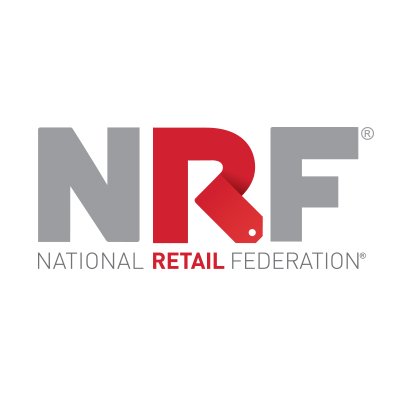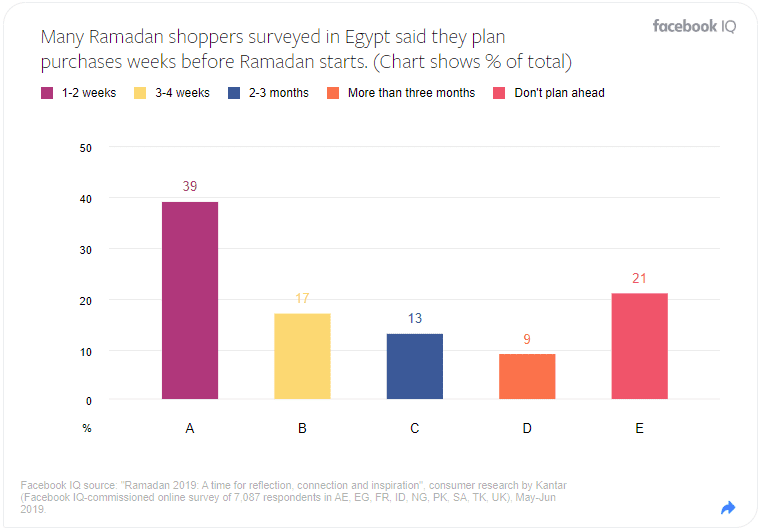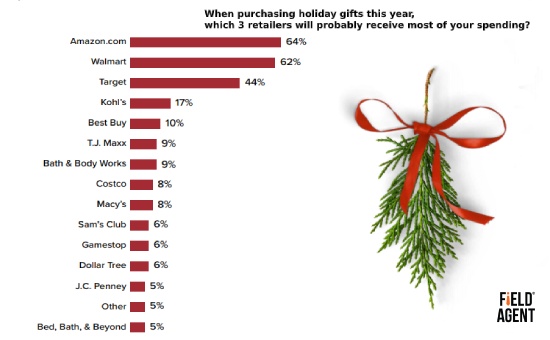Top Spending Event by American Consumers in 2019-2023 | NRF
Marketing Seasons Strategy | USA
Holidays are always special! I mean, these are the special days we make memories with the people we love. Well, making memories and spending money.
In this post, we will take a closer look at the holiday spending statistics in 2018, 2019, and 2022!
The fourth quarter of the year is full of many holiday seasons. And there is no doubt that businesses are stressing about the latest and greatest ways to bring in new customers before the end of the retail industry’s busiest season.
Holiday shopping season 2018 was a massive hit! One of the best in the past few years. Both online and brick-and-mortar businesses demonstrated robust growth rates.
That year witnessed a healthy overall consumer spending environment. The US holiday sales are predicted to cross $1 trillion for the first time and US retail eCommerce spending will rise to $135.35 billion, according to eMarketer.
The question now is, when will American consumers spend more during all these awesome holiday seasons?
The Top 10 Spending Holidays in USA 2018 Vs. 2019
According to NRF, the top spending holidays in the USA are:
- Back to College
- Winter Holidays
- Back to School
- Mother’s Day
- Easter
- Valentine’s Day
- Father’s Day
- Graduation
- Halloween
- Super Bowl
If you’re looking for the best tool for social media management in 2022 no matter what platform you’re using, then you have to use Fanpage Karma.
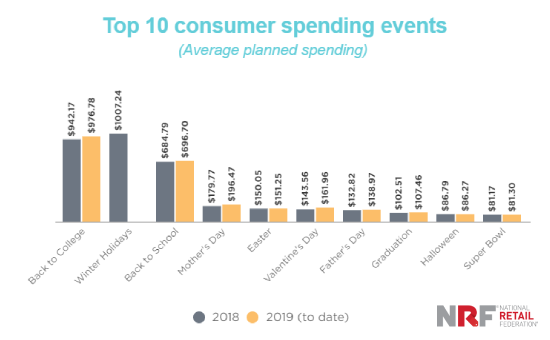
An indicator Shows the Top 10 Spending Holidays in USA 2018 Vs. 2019
Related Report: Holiday Online Shopping Trends 2019: Retailers Win with Customer Centricity
How Much American Consumers Will Spend During the 2019 Holiday Season?
In 2019, back-to-college and back-to-school holiday seasons are expected to witness the highest spending ever ($976.78 for back-to-college and $696.70).
In contrast, American consumers plan to spend $86.27 during Halloween and $81.30 during the Super Bowl holiday season.
Related Guide: 16 Holiday Marketing Campaign Strategies to Delight Your Customers
How Much Does the Average American Spend on Holiday Shopping? : Mother’s Day Edition:
- Back in 2019, Americans were planning to spend $25 billion on Mother’s Day.
- Anyhow, most money is spent on jewelry and special outings, it has reached $5.1 billion and $4.6 billion respectively.
- And people aged between 35 and 44 spend the most money on Mother’s Day.
Holiday Spending Statistics:
Let’s check how the holidays stack up in terms of spending in the following figure:
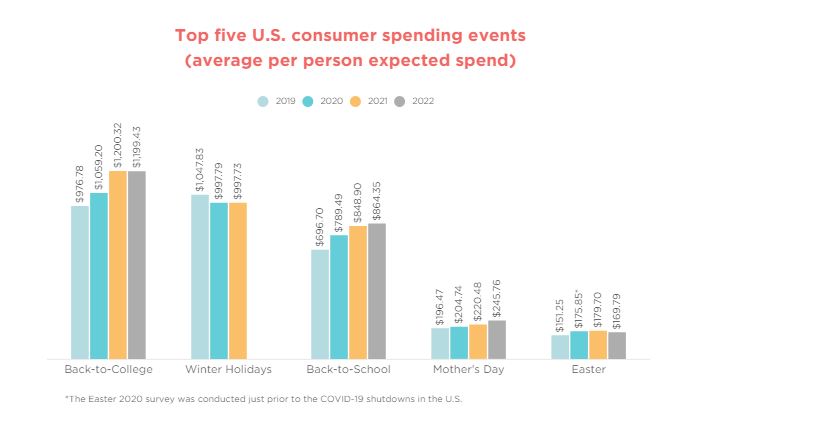
- The above figure shows that back-to-college spending in 2022 reached $1,199.43.
- And according to the holiday spending statistics, winter holiday spending reached $997.73 in 2021.
- However, back-to-school spending in 2022 reached $846.35.
- And Mother’s day holiday spending reached $245.76 in 2022.
- Lastly, Easter day spending reached $169.79 in 2022.
Here are the holidays ranked by spending (average per person expected spend) from 2019 to 2022:
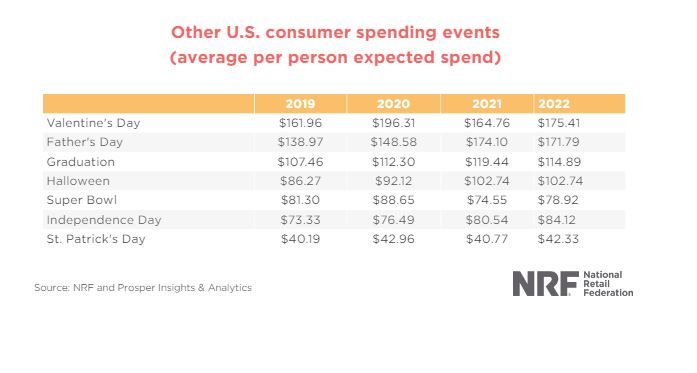
The Top Spending Holidays in USA in 2020:
The COVID-19 pandemic had a significant impact on holiday travel in the United States in 2020, with many people opting to stay at home and avoid large gatherings. However, based on available data, here are some of the top holidays that Americans spent on in 2020:
- Thanksgiving: Despite health officials warning against travel and large gatherings, millions of Americans still traveled to celebrate Thanksgiving with their families in 2020.
- Christmas: Although though fewer people travelled than in previous years, many Americans still made the decision to travel to spend Christmas with their loved ones.
- New Year’s Day: Several Americans nonetheless travelled abroad in 2020 to mark the beginning of a new year, despite the fact that many New Year’s Eve events were postponed or shifted online.
- Memorial Day: While fewer than in previous years due to the outbreak, many Americans also travelled over the Memorial Day weekend.
- Labor Day: Many individuals took advantage of the long weekend to travel and enjoy the outdoors even though September Day traditionally signals the end of the summer travel season.
American Consumers Spending Rate on Holidays, 2020:
The COVID-19 epidemic significantly affected US consumer purchasing over the 2020 holiday season.
- The Christmas season (November 1 – December 24, 2020) had an increase in U.S. retail sales of 3% over the prior year, citing a report by Mastercard SpendingPulse, which monitors retail spending trends.
- Yet, as many customers avoided brick-and-mortar businesses due to worries about the epidemic, online shopping was mostly responsible for the surge in spending. In contrast to the prior year, online sales increased by 49% while in-store sales decreased by 10.3%.
- Despite the fact that Americans did spend money over the holiday season in 2020, it was probably less than in previous years because of the pandemic’s impact on the economy and the decline in in-store purchasing.
Also, it’s likely that fewer trips and big gatherings resulted in less money being spent on holiday-related activities and events.
American Consumers Spending Rate on Holidays, 2023:
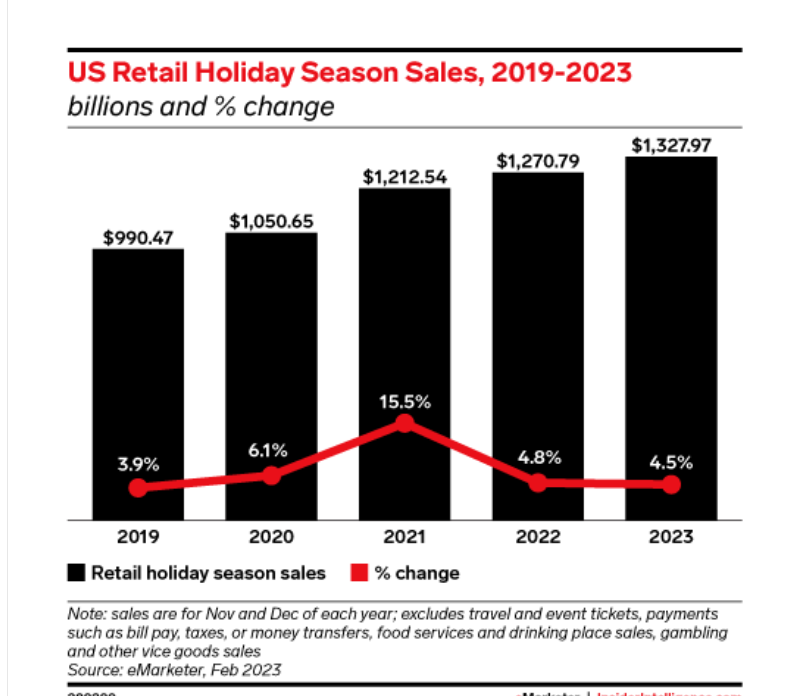
A graph shows the spending rates changes from 2019 to 2023.
- In 2021, the US spending rate in Holiday season changed up to 15.5%
- In 2023, US spending retail total so far has reached almost 1.5K million
